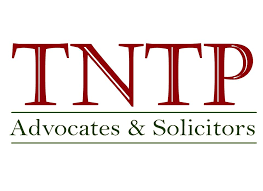In the context of the economy gradually recovering after the difficult period of the Covid-19 pandemic, businesses are not only focusing on their operations but also on the process of debt recovery to ensure their financial sources. However, during the debt recovery process, businesses may encounter cases where the debtor is no longer able to repay the debt. What should be done to ensure the best cost and efficiency in debt recovery? In this article, TNTP will provide its opinion to answer the question.
1. Classification
A business is determined to be unable to repay the debt when it is no longer able to maintain its operations, does not generate revenue, and thus cannot have a source of money to pay the debt. Businesses that are no longer able to pay their debts can be divided into two groups:
• Group of businesses that are temporarily suspended
• Group of businesses that are still operating but not generating revenue
Verifying the status of a business to determine whether it is temporarily suspended or still operating can be done through the Taxpayer Information Lookup portal or the National Business Registration Portal. Knowing which group the debtor belongs to will affect the choice and implementation of necessary measures, so businesses need to verify the debtor’s operating status before proceeding with legal measures to recover the debt.
2. Case of the debtor’s temporary suspension of operations
A business’s temporary suspension of operations is a state where the business has notified the competent management agency of its decision to suspend all operations for a certain period. During this time, the business will not conduct any business activities, will not generate revenue, and will not have to submit tax declarations. However, after some time, the suspended business can perform procedures to resume its operations.
Therefore, if the debtor of a business is currently in a state of temporary suspension of operations but may have the ability to operate in the future, the business may consider initiating legal proceedings at the competent dispute resolution agency, which may be the Commercial Arbitration Tribunal or the Court with jurisdiction, to demand that the debtor fulfill its payment obligations.
After the competent dispute resolution agency has issued a legally effective Judgment/Ruling/Decision, the business can submit a request for enforcement of this Judgment/Ruling/Decision. The enforcement will be carried out by the competent civil enforcement agency using state power to force the debtor to make the payment. Even if the debtor is in a state of temporary suspension of operations, the enforcement agency will take necessary measures to contact and require the debtor to make a payment or provide a specific payment plan. In case the debtor is no longer able to pay, the enforcement agency will verify, enforce, seal off assets, and bank accounts, and may take measures to influence the legal representative such as issuing a Decision to temporarily prohibit leaving the country to ensure the enforcement process.
3. The case where the debtor is still in active status but has lost the ability to pay
In the case where a business looks up information on the Taxpayer Information Portal or the National Business Registration Portal and sees that the debtor’s status is still active. However, in reality, the business determines that the debtor is no longer operating and has lost the ability to pay debts. In this case, the business can submit a Petition for Bankruptcy Declaration as prescribed in the Bankruptcy Law.
According to the provisions of the Bankruptcy Law, if the debtor does not make payment when due for more than 03 months, the creditor has the right to file a Petition for Bankruptcy Declaration with the debtor along with relevant documents and evidence. Then, the competent court will consider the contents of the case to issue or not to issue a Bankruptcy Declaration.
After issuing the Bankruptcy Declaration, those who carry out the bankruptcy procedures such as the court enforcement agency, the administrator, the chief judge, the judge, and the prosecutor’s office will proceed to verify and evaluate all remaining assets of the debtor for asset liquidation. Accordingly, the debtor is obliged to fulfill tax obligations, financial obligations to the state, and outstanding debts with assets owned by the debtor. Moreover, after the court has issued the Bankruptcy Declaration, all transactions aimed at transferring the debtor’s assets to another third party will be considered invalid to ensure the process of fulfilling the debtor’s asset obligations during the bankruptcy procedures. Therefore, after the debtor has undergone bankruptcy procedures, the business will receive the loan amount back in case the debtor’s assets are sufficient to fulfill the debt repayment obligation.
Above is an article on the topic “What to do when the debtor is no longer able to pay?”. We hope this article will be useful in the debt recovery process for businesses.
Best regards,







